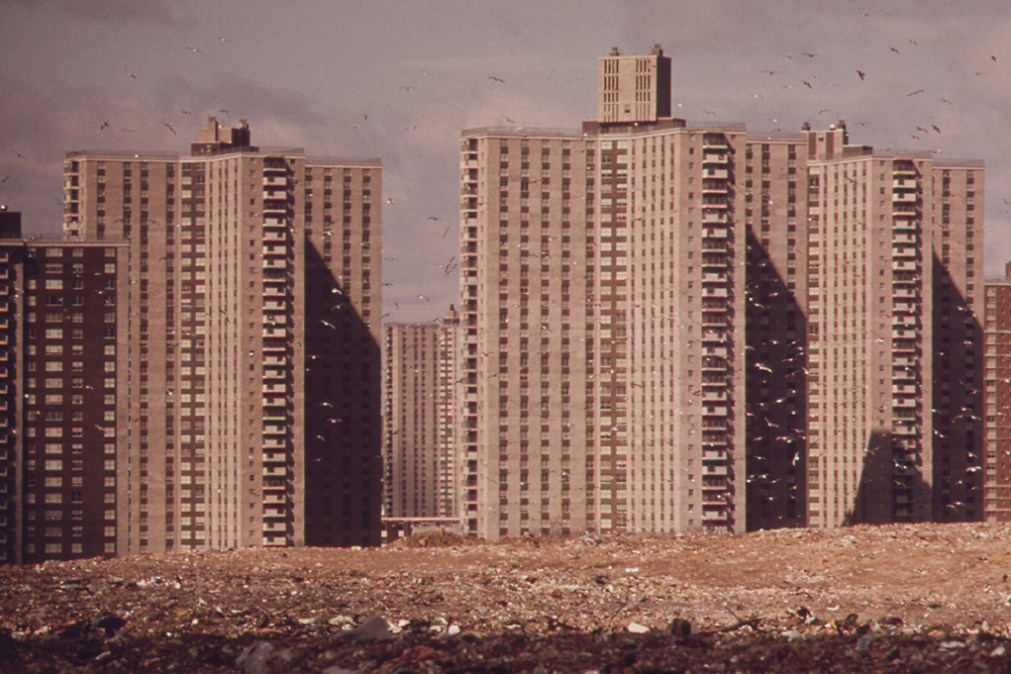Can government’s centralized data offices put themselves out of business?

When New York City suffered an outbreak of Legionnaires’ disease in 2015, it didn’t take long for city health workers to identify the fumes from cooling towers on a large Bronx housing complex as one of the original culprits. But when it came to identify other potential hot zones for the respiratory disease, city workers had a hard time figuring out where to go because they had no citywide map of cooling towers.
Amen Ra Mashariki, who at the time ran the Mayor’s Office of Data Analytics, told an audience at the Smart Cities Week conference in Washington, D.C., last month that the scenario was a common case of a city not knowing something about itself. He also said it presented a picture of why city data offices are so crucial today, but could become less essential in the years to come.
The New York City Council moved to mandate immediate cleanings and inspections of cooling towers across the five boroughs, but no action could be taken without a dataset that the council imagined was stored in a municipal office — it just didn’t know which one.
The council’s solution was to ask Mashariki, who now leads the urban analytics division at the geospatial intelligence firm Esri, for help finding the stranded data, which he did. He was able to find Department of Finance records of property owners who’d taken advantage of a city tax break for buildings that feature cooling towers. While it wasn’t a complete list of matching structures, it was a solid foundation that helped Mashariki’s data analysts learn that cooling towers can only be added to buildings at least seven stories high.
“So now you can ensure every cooling tower is registered and cleaned, therefore making a health problem go away,” he said.
Mashariki uses the Legionnaires’ episode as an example of a city’s central data office solving a problem by finding the right information from an unexpected source. Those detective skills come in handy in cities that have data related to public health stowed in their tax records offices.
“That tells you a bit about how cities manage data,” he told StateScoop.
‘Make it go away’
It’s not unusual in cities for potentially life-saving data to be owned by one office, but unshared with other offices that might need act on it. It’s even common for cities like New York that have robust data programs, Mashariki said.
“Agencies function from the standpoint of ‘What’s my function as an agency?'” he said. “Other than an open-data law in New York City, there’s no law that says they must then share that exact same data to any other city. There has to be collaboration and communication across cities, and the challenge is putting that together before there is a need to utilize it.”
But cities could become better at organizing and managing their data across agencies, and presumably they someday will. If that happens, Mashariki said he hopes offices like New York’s MODA can put themselves out of business. Long term, he said, individual city agencies need to develop their own data scientists and analysts who aren’t walled off from their counterparts in other departments.
“I used to have a quote in MODA: ‘My job is to grow MODA’s capacity and role in the city in the short term in order to make it go away in the long term,'” he said. “Our job is to build things. In the cooling towers incident, in many other incidents, we were the conduit for agencies to share data, standardize that data, use that data, get data from agencies and get it to an operational team.”
MODA helped New York solve its Bronx Legionnaires’ problem, but the incident also accelerated the buildings department’s creation of its own dedicated data analysis team. The challenge going forward, Mashariki said, is to see that office play nicely with the data offices in other city bureaus. And the better they get along, the less there is for MODA to do.
Sporadic success
Mashariki said he’s seen that kind of cross-agency collaboration succeed in other cities. He cited New Orleans, which in 2015 began a program distributing free smoke alarms to homes based on calculated assessments of their fire risks. New Orleans’ Office of Performance of Accountability used data culled from the U.S. Census Bureau to map the city based on responses to surveys about smoke-alarm installations and data related to income levels, building age and length of tenancy, determining which structures most likely needed new alarms. The program has been credited with preventing the deaths of 11 residents of a house that caught fire in October 2015, among other blazes.
There’s also Chicago, which has been using 311 calls to predict rat infestations.
“The concept is if you get a 311 complaint about garbage, is that an indicator for X number of weeks later, you get a rat problem,” Mashariki said.
Chicago’s foray into rat prediction started in 2011 , when it hired Carnegie Mellon University computer scientist Daniel Neill to look at roughly 34,000 rodent complaints into the city’s 311 service. Neill’s research analyzed the rat data against years’ worth of other kinds of complaints, including overflowing trash, dirty restaurants and empty buildings. Neill’s model, which is still in use, found that correlation between complaints about unsanitary conditions and rodent reports days or weeks later. The District of Columbia embarked on a similar project last year.
For now, few local or state governments appear ready to move toward Mashariki’s model wherein they become less dependent on a single, centralized data office. North Dakota, for instance, only just became the 20th state since 2010 to hire a chief data officer.
Since passing legislation in 2016 that city data be “open by preference,” Seattle has attempted to bring its many agencies into the fold by instating standards, such as a minimum number of datasets shared and a designated data “champion” in each agency. And while the effort appears to be progressing, it’s unclear whether agencies are truly engaged in the spirit of data sharing that would allow centralized management to disappear, or merely complying with new rules.
But eventually, Mashariki suggested, the degree of governmentwide sophistication needed to cast off an office like New York City’s MODA will come.
“The idea is that five, ten years from now [it] shouldn’t be so needed,” he said, “because you’ve knocked down those bureaucratic silos.”






